-
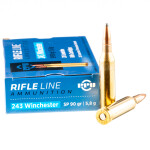 200 Rounds of .243 Win Ammo by Prvi Partizan - 90gr SP
$199 As low as: $185
200 Rounds of .243 Win Ammo by Prvi Partizan - 90gr SP
$199 As low as: $1853 Ready to Ship
-
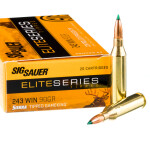 20 Rounds of .243 Win Ammo by Sig Sauer Elite Hunter - 90gr Controlled Expansion Tip
$20.50
20 Rounds of .243 Win Ammo by Sig Sauer Elite Hunter - 90gr Controlled Expansion Tip
$20.5074 Ready to Ship
-
 20 Rounds of .243 Win Ammo by Prvi Partizan - 100gr SP
$22.25
20 Rounds of .243 Win Ammo by Prvi Partizan - 100gr SP
$22.25127 Ready to Ship
-
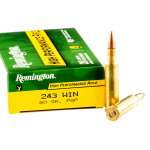 20 Rounds of .243 Win Ammo by Remington - 80gr PSP
$24.50
20 Rounds of .243 Win Ammo by Remington - 80gr PSP
$24.50126 Ready to Ship
-
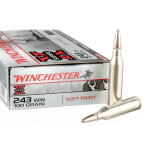 20 Rounds of .243 Win Ammo by Winchester - 100gr PP
$24.75
20 Rounds of .243 Win Ammo by Winchester - 100gr PP
$24.75118 Ready to Ship
-
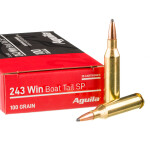 20 Rounds of .243 Win Ammo by Aguila - 100gr SPBT
$24.75
20 Rounds of .243 Win Ammo by Aguila - 100gr SPBT
$24.7577 Ready to Ship
-
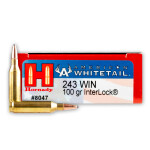 200 Rounds of .243 Win Ammo by Hornady American Whitetail - 100gr SPBT
$254
200 Rounds of .243 Win Ammo by Hornady American Whitetail - 100gr SPBT
$2547 Ready to Ship
-
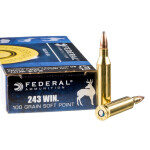 200 Rounds of .243 Win Ammo by Federal Power-Shok - 100gr SP
$269
200 Rounds of .243 Win Ammo by Federal Power-Shok - 100gr SP
$26910 Ready to Ship
-
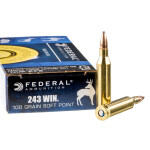 20 Rounds of .243 Win Ammo by Federal - 100gr SP
$28.50
20 Rounds of .243 Win Ammo by Federal - 100gr SP
$28.5017 Ready to Ship
-
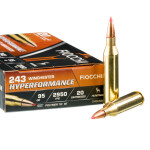 20 Rounds of .243 Win Ammo by Fiocchi - 95gr SST
$28.50
20 Rounds of .243 Win Ammo by Fiocchi - 95gr SST
$28.50125 Ready to Ship
-
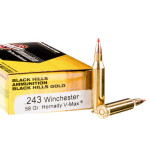 20 Rounds of .243 Win Ammo by Black Hills Gold - 58gr V-MAX
20 Rounds of .243 Win Ammo by Black Hills Gold - 58gr V-MAX
Regular Price: $44.75
On Sale: $29
71 Ready to Ship
-
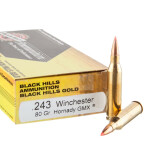 20 Rounds of .243 Win Ammo by Black Hills Gold - 80gr GMX
20 Rounds of .243 Win Ammo by Black Hills Gold - 80gr GMX
Regular Price: $47.50
On Sale: $29
60 Ready to Ship
-
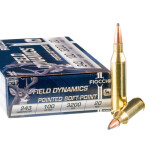 20 Rounds of .243 Win Ammo by Fiocchi - 100 gr PSP
$29.50
20 Rounds of .243 Win Ammo by Fiocchi - 100 gr PSP
$29.5012 Ready to Ship
-
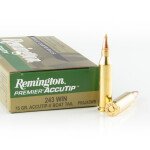 20 Rounds of .243 Win Ammo by Remington Premier - 75gr AccuTip-V BT
$29.75
20 Rounds of .243 Win Ammo by Remington Premier - 75gr AccuTip-V BT
$29.75107 Ready to Ship
-
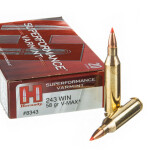 20 Rounds of .243 Win Ammo by Hornady Superformance Varmint - 58 Grain V-Max
$35.50
20 Rounds of .243 Win Ammo by Hornady Superformance Varmint - 58 Grain V-Max
$35.5015 Ready to Ship
-
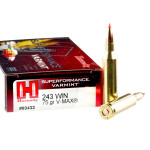 20 Rounds of .243 Win Ammo by Hornady - 75gr V-Max
$35.50
20 Rounds of .243 Win Ammo by Hornady - 75gr V-Max
$35.5029 Ready to Ship
-
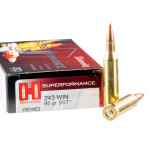 200 Rounds of .243 Win Ammo by Hornady Superformance - 95gr SST
$364
200 Rounds of .243 Win Ammo by Hornady Superformance - 95gr SST
$3641 Ready to Ship
-
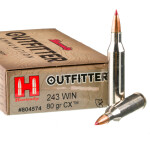 20 Rounds of .243 Win Ammo by Hornady Outfitter - 80gr CX
$36.50
20 Rounds of .243 Win Ammo by Hornady Outfitter - 80gr CX
$36.5098 Ready to Ship
-
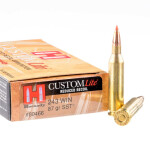 20 Rounds of .243 Win Ammo by Hornady Custom Lite - 87gr SST
$38.25
20 Rounds of .243 Win Ammo by Hornady Custom Lite - 87gr SST
$38.2520 Ready to Ship
-
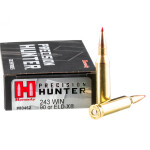 200 Rounds of .243 Win Ammo by Hornady Precision Hunter - 90gr ELD-X
$409
200 Rounds of .243 Win Ammo by Hornady Precision Hunter - 90gr ELD-X
$4092 Ready to Ship
-
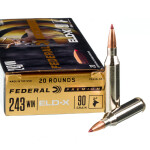 20 Rounds of .243 Win Ammo by Federal - 90gr ELD-X
$42.25
20 Rounds of .243 Win Ammo by Federal - 90gr ELD-X
$42.2570 Ready to Ship
-
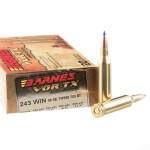 20 Rounds of .243 Win Ammo by Barnes - 80gr TTSX
$42.50
20 Rounds of .243 Win Ammo by Barnes - 80gr TTSX
$42.506 Ready to Ship
-
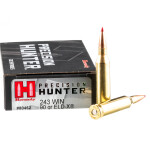 20 Rounds of .243 Win Ammo by Hornady Precision Hunter - 90gr ELD-X
$43.50
20 Rounds of .243 Win Ammo by Hornady Precision Hunter - 90gr ELD-X
$43.509 Ready to Ship
-
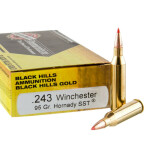 20 Rounds of .243 Win Ammo by Black Hills Gold - 95gr Polymer Tipped
$45
20 Rounds of .243 Win Ammo by Black Hills Gold - 95gr Polymer Tipped
$4531 Ready to Ship
-
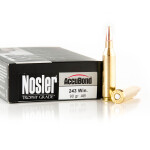 20 Rounds of .243 Win Ammo by Nosler Ammunition - 90gr Nosler Accubond
$49
20 Rounds of .243 Win Ammo by Nosler Ammunition - 90gr Nosler Accubond
$4919 Ready to Ship
-
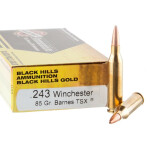 20 Rounds of .243 Win Ammo by Black Hills Gold Ammunition - 85gr TSX
$56.50
20 Rounds of .243 Win Ammo by Black Hills Gold Ammunition - 85gr TSX
$56.5046 Ready to Ship
243 Winchester Ammunition Common Uses & Overview
Derived from a necked-down .308 Win casing, the .243 Winchester is a handy cartridge effective against everything from varmints to deer and boar. Introduced in 1955 and first chambered in the Winchester Model 70, it is one of the most popular sporting calibers in the US. The .243 Win is well-liked for its dependable performance, flat trajectories, and relatively low felt recoil. This latter property means that many rifles chambered in .243 Winchester can be made relatively light and easy to carry for long hours in the field.The .243 Win's versatility means a wide variety of loadings are available. A round of .243 Winchester ammo may fire a bullet weighing anywhere from 55 to 115 grains, with muzzle velocities also varying widely from 3,000 to 4,000 feet per second. As with other hunting calibers, the lighter bullets are optimized for rapid expansion and elimination of coyotes and other small pests, while heavier ones deliver deep penetration and superior lethality against larger animals. Varmint loads tend to use fragmenting hollow points, while deer rounds typically feature soft point bullets (sometimes polymer tipped) that expand for terminal effect but do not break apart and damage more meat than necessary.
.243 Winchester ammo is available from almost every manufacturer. The vast majority of this ammo uses soft or hollow point bullets, in keeping with the round's sporting popularity. Solid copper projectiles are also available from Hornady and Barnes. While somewhat more expensive than traditional ammo, these produce very strong performance and are particularly advantageous for meat hunters, as they do not pose a risk of lead contamination.
